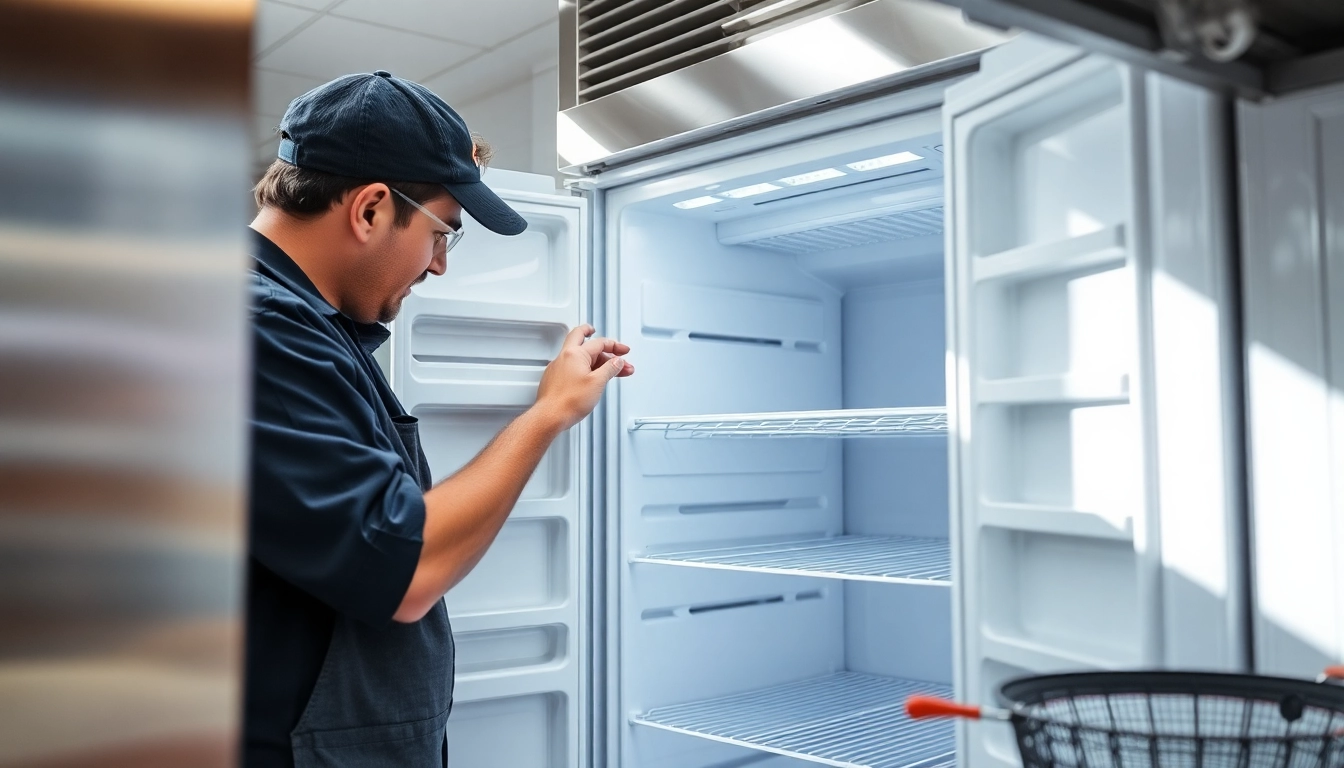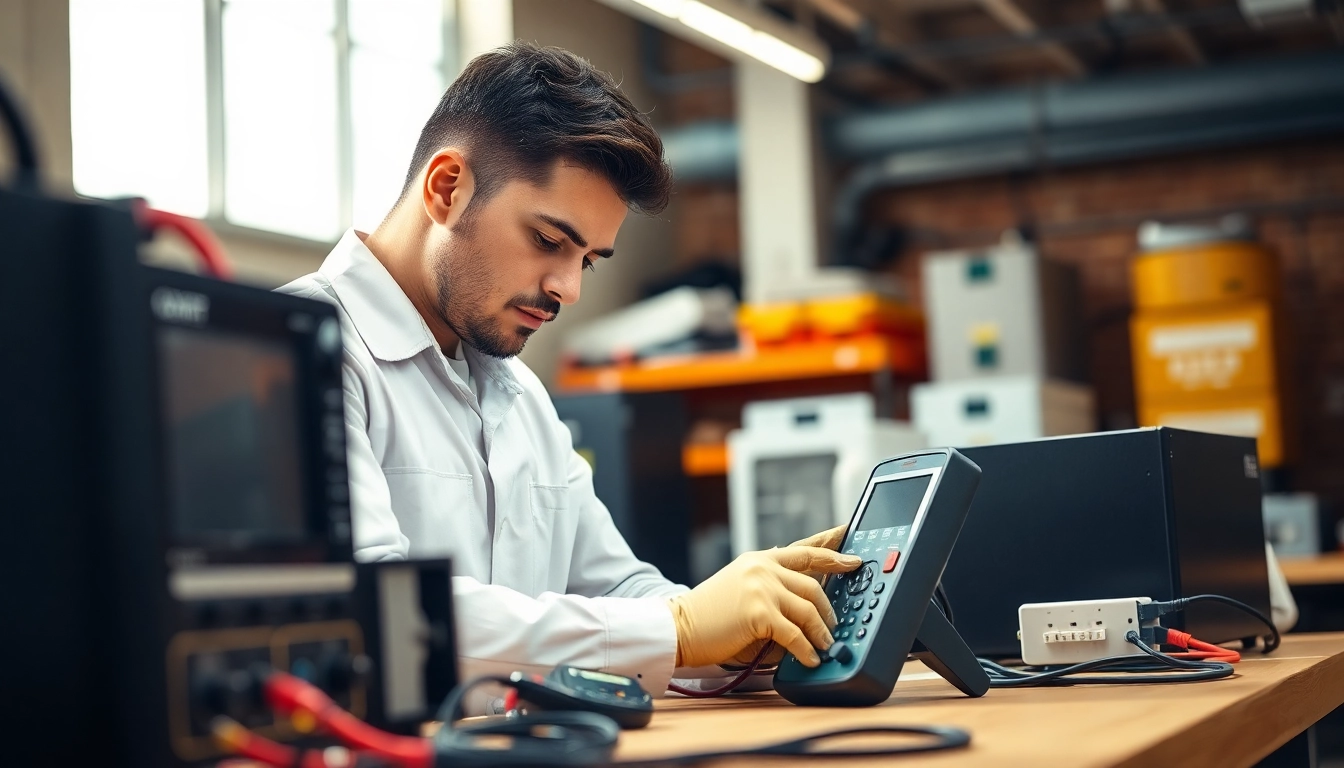Understanding Walk in Freezer Repair Essentials
Walk-in freezers are crucial in numerous sectors, including restaurants, grocery stores, and food distribution centers. These large refrigeration units maintain low temperatures to store food and other perishable items, ensuring they remain safe for consumption. When these units malfunction, it can lead to significant operational disruptions and financial losses. Understanding the fundamentals of walk in freezer repair is essential for any business relying on these systems.
What is a Walk in Freezer?
A walk-in freezer is a large refrigerated space, typically ranging in size from a small room to a sizeable warehouse, designed to store large quantities of frozen goods. Unlike typical household freezers, walk-in freezers are constructed to facilitate frequent loading and unloading of products while maintaining consistent temperatures. Equipped with powerful compressors, evaporator coils, and insulation, they provide precise temperature control, often as low as -10°F (-23°C), depending on the requirements of stored goods.
Common Issues Requiring Walk in Freezer Repair
Several problems may necessitate repairs for walk-in freezers. These issues can stem from regular wear and tear, improper maintenance, or component failures. Common problems include:
- Temperature Fluctuations: Inconsistent temperatures can jeopardize food safety and spoil products.
- Physical Damage: Wear and tear on doors, gaskets, and walls can create seals that fail, allowing cold air to escape.
- Compressor Failures: The compressor is a critical component; if it fails, the freezer cannot achieve or maintain the desired temperature.
- Refrigerant Leaks: Leaks can lead to reduced cooling efficiency and require immediate attention.
- Electrical Issues: Problems with wiring or control panels can disrupt operations and require professional diagnoses.
Importance of Timely Repairs
The importance of timely walk-in freezer repairs cannot be overstated. Delay in addressing issues can escalate problems and lead to more substantial repairs or even a complete system replacement. Moreover, improper temperature maintenance can result in significant financial losses due to spoiled goods. Regular monitoring and prompt repairs ensure your walk-in freezer operates effectively, preserving the quality of your stored products and supporting your business’s bottom line.
Signs Your Walk in Freezer Needs Immediate Attention
Recognizing the warning signs that your walk-in freezer needs immediate attention can help you mitigate risks and avoid greater issues. Here are some key indicators to watch for:
Temperature Fluctuations and Their Causes
One of the most significant signs of trouble is temperature fluctuations. A walk-in freezer should maintain a consistent temperature. If you notice temperatures rising above -10°F (-23°C), potential causes may include:
- Dirty Condenser Coils: Accumulated grime can hinder the coils’ efficiency, forcing the compressor to work harder.
- Faulty Thermostat: If the thermostat is malfunctioning, it may signal the compressor to operate at incorrect intervals.
- Overloaded Freezer: An excessive amount of stored products can impede proper air circulation and contribute to inconsistent temperatures.
Strange Noises: What They Indicate
Unusual sounds from your walk-in freezer often signal mechanical issues. Common noises can include:
- Grinding: This may indicate damaged bearings in the compressor.
- Hissing: This could be a sign of refrigerant leaks.
- Popping or Rattling: These noises might indicate loose components or debris within the unit.
If you hear any strange noises, don’t ignore them; it’s essential to inspect the unit promptly.
Heavy Frost Buildup Issues
Heavy frost buildup on the walls or racks of the freezer can obstruct airflow and affect temperature regulation. This issue may arise from:
- Faulty Defrost System: If the defrost heater or timer malfunctions, it may allow frost to accumulate excessively.
- Door Seals: Worn or damaged door seals can let in warm air, contributing to frost buildup.
- Low Refrigerant Levels: Reduced refrigerant can lead to lower evaporating temperatures, causing moisture to freeze within the unit.
DIY Walk in Freezer Maintenance Tips
While many repair issues require professional attention, regular maintenance can prevent numerous problems from developing in the first place. Here are some DIY maintenance tips to keep your walk-in freezer in optimal condition:
Regular Cleaning and Inspection Best Practices
Implementing a cleaning schedule is vital. Regular cleaning of condenser and evaporator coils helps prevent dust and debris accumulation. Here are some steps to consider:
- Clean Condenser Coils: Use a vacuum or brush to remove dirt and debris at least twice a year.
- Inspect Door Seals: Check the gaskets for cracks and tears. Clean them with soap and water to ensure a tight seal.
- Maintain Proper Drainage: Ensure the drainage holes are clear to prevent ice buildup.
Common Troubleshooting Steps
Before calling a professional, you can attempt some simple troubleshooting steps if you notice problems:
- Check the thermostat settings to ensure they are correctly set.
- Inspect the power supply to confirm the unit is receiving adequate voltage.
- Listen for operation sounds from the compressor and fans; if they are silent, it may be a power-related issue.
When to Call a Professional for Walk in Freezer Repair
While DIY maintenance can be helpful, some situations necessitate professional expertise. You should seek help when:
- The unit is not maintaining the proper temperature despite troubleshooting efforts.
- Compressor issues arise, such as excessive noise or failure to start.
- You experience refrigerant leaks, evident by hissing sounds or oil spots near the unit.
Choosing the Right Service for Walk in Freezer Repair
Selecting the right repair service can make all the difference in resolving your walk-in freezer issues efficiently. Here are key factors to consider:
What to Look for in a Repair Technician
When selecting a repair technician for your walk-in freezer, ensure they possess:
- Licensed and Insured: This protects you from liability should any accidents occur during repairs.
- Experience with Commercial Refrigeration: Technicians should have specific training and experience with walk-in systems.
- Up-to-date Certifications: Continuous education and certifications show commitment to staying current in the field.
Comparing Costs of Walk in Freezer Repair Services
Understanding the costs associated with repairs is essential. Discuss the following with potential repair services:
- Service Call Fees: Most companies charge a fee to diagnose the issue, typically ranging from $75 to $150.
- Hourly Rates: Repair rates can vary widely based on the technician’s experience and company reputation.
- Parts Costs: Inquire about markups on components; some companies charge significantly more than wholesale prices.
Reputation and Reviews: Ensuring Quality Service
Don’t overlook the importance of reviews and testimonials when choosing a repair service. Research is vital:
- Check online reviews on platforms like Google, Yelp, and Angie’s List.
- Ask for references or speak to other businesses about their experiences.
- Evaluate their response time and customer service, as these factors significantly impact your experience.
Long-term Strategies for Reducing Walk in Freezer Repair Costs
Implementing strategies to minimize repair costs over time can lead to better budgeting and improved operational efficiency. Here are some robust solutions:
Implementing Preventative Maintenance Plans
A well-structured maintenance plan can drastically reduce repair frequency and costs. Consider:
- Regular Professional Inspections: Schedule maintenance checks to identify and address potential problems before they escalate.
- Cleaning Schedules: Establish routine cleaning for all major components, including coils, drains, and gaskets.
- Monitoring System Performance: Use a digital log to track temperature changes and operating hours, identifying when maintenance is necessary.
Investing in Quality Equipment
When acquiring a new walk-in freezer, prioritize quality. Investing in reputable brands may save costs in the long run through:
- Greater Energy Efficiency: More efficient systems often have lower operating costs.
- Longer Lifespans: High-quality equipment typically lasts longer, reducing replacement frequency.
- Better Support: Premium brands often provide superior service and warranties, facilitating easier repairs.
Understanding Warranty Coverage and Repairs
Familiarizing yourself with your walk-in freezer’s warranty can save you significant repair costs. Here’s how:
- Review Warranty Terms: Ensure you understand what’s covered, including parts, labor, and specific exclusions.
- Use Authorized Repair Services: To maintain warranty validity, use only authorized technicians for repairs.
- Document Maintenance: Keep records of all maintenance and repairs to support warranty claims effectively.



